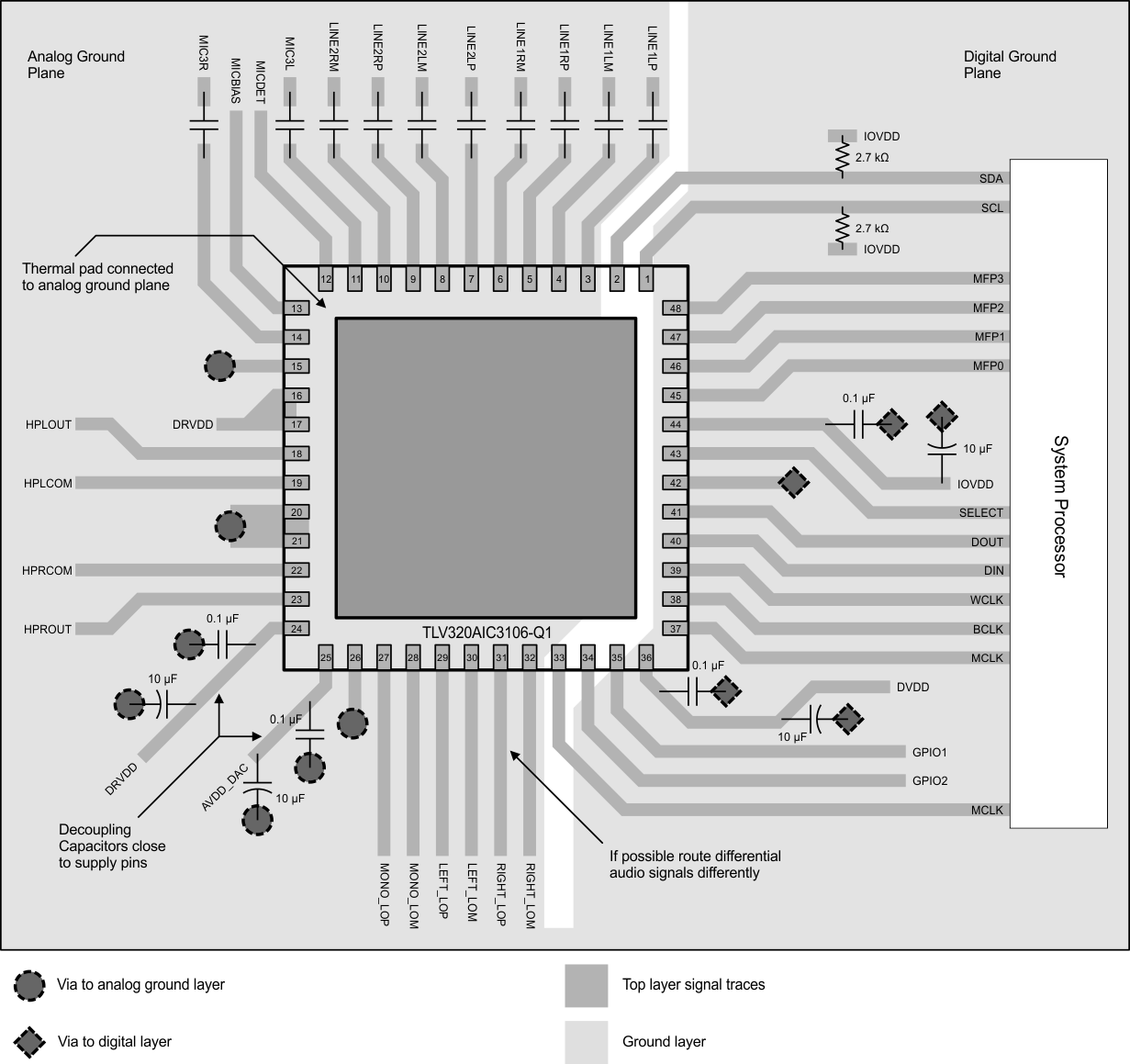SLAS663C August 2009 – June 2016 TLV320AIC3106-Q1
PRODUCTION DATA.
- 1 Features
- 2 Applications
- 3 Description
- 4 Revision History
- 5 Description (Continued)
- 6 Device Comparison Table
- 7 Pin Configuration and Functions
-
8 Specifications
- 8.1 Absolute Maximum Ratings
- 8.2 ESD Ratings
- 8.3 Recommended Operating Conditions
- 8.4 Thermal Information
- 8.5 Electrical Characteristics
- 8.6 Switching Characteristics I2S/LJF/RJF In Master Mode
- 8.7 Switching Characteristics I2S/LJF/RJF In Slave Mode
- 8.8 Switching Characteristics DSP In Master Mode
- 8.9 Switching Characteristics DSP In Slave Mode
- 8.10 Typical Characteristics
-
9 Detailed Description
- 9.1 Overview
- 9.2 Functional Block Diagram
- 9.3
Feature Description
- 9.3.1 Audio Data Converters
- 9.3.2 Stereo Audio ADC
- 9.3.3 Automatic Gain Control (AGC)
- 9.3.4 Stereo Audio DAC
- 9.3.5 Digital Audio Processing For Playback
- 9.3.6 Digital Interpolation Filter
- 9.3.7 Delta-Sigma Audio Dac
- 9.3.8 Audio Dac Digital Volume Control
- 9.3.9 Analog Output Common-Mode Adjustment
- 9.3.10 Audio DAC Power Control
- 9.3.11 Audio Analog Inputs
- 9.3.12 Analog Input Bypass Path Functionality
- 9.3.13 ADC PGA Signal Bypass Path Functionality
- 9.3.14 Input Impedance and VCM Control
- 9.3.15 MICBIAS Generation
- 9.3.16 Analog Fully Differential Line Output Drivers
- 9.3.17 Analog High Power Output Drivers
- 9.3.18 Short Circuit Output Protection
- 9.3.19 Jack and Headset Detection
- 9.3.20 General-Purpose I/O
- 9.4 Device Functional Modes
- 9.5
Programming
- 9.5.1 Hardware Reset
- 9.5.2 Digital Control Serial Interface
- 9.5.3 I2C Control Mode
- 9.5.4 I2C Bus Debug In A Glitched System
- 9.5.5 Digital Audio Data Serial Interface
- 9.5.6 Right-Justified Mode
- 9.5.7 Left-Justified Mode
- 9.5.8 I2S Mode
- 9.5.9 DSP Mode
- 9.5.10 TDM Data Transfer
- 9.5.11 Audio Clock Generation
- 9.6 Register Maps
- 10Application and Implementation
- 11Power Supply Recommendations
- 12Layout
- 13Device and Documentation Support
- 14Mechanical, Packaging, And Orderable Information
12 Layout
12.1 Layout Guidelines
PCB design is made considering the application, and the review is specific for each system's requirements. However, general considerations can optimize the system performance.
- The TLV320AIC3106-Q1 thermal pad must be connected to analog output driver ground using multiple vias to minimize impedance from the device to ground.
- Analog and digital grounds must be separated to prevent possible digital noise from affecting the analog performance of the board.
- The TLV320AIC3106-Q1 requires the decoupling capacitors to be placed as close as possible to the device power supply terminals.
- TI recommends routing the differential audio signals differentially on the PCB for better noise immunity.
12.2 Layout Example
 Figure 44. Layout Diagram
Figure 44. Layout Diagram